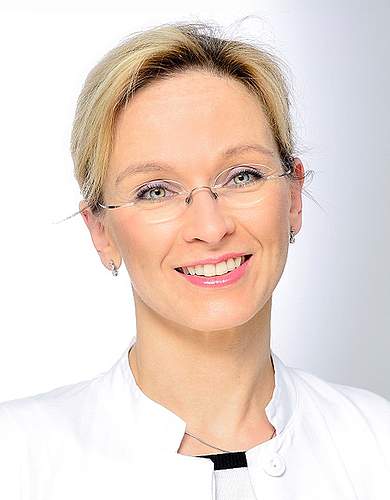Balloon pulmonary angioplasty for patients with inoperable chronic thromboembolic pulmonary hypertension
CTEPH is a life-threatening disease, arising mostly as a result of blood clots traveling from the blood vessels into the pulmonary arteries or as a result of progressive changes in small pulmonary vessels. The subsequent narrowing of the vessels leads to breathing difficulties and stress disorders. „A number of patients can be helped with an operation, in which the deposits are removed from the affected vessels“, says Dr. Karen Olsson, a doctor at the Clinic for Pneumology at the MHH and first author of the publication. „Should such an intervention not be possible, however, due to the position of the damaged vessels or to the patient‘s state of health, the patient can be given medication – although this is often only moderately successful“.
A new method of treatment for inoperable patients is balloon pulmonary angioplasty (BPA), in which the narrow vessels are dilated using catheter techniques and inflatable balloons. Normally, 3-6 sessions are necessary before all the affected parts of the lung are adequately treated. This method was first described over 10 years ago, but was then not further pursued due to the occurrence of frequent and serious complications.
In Japan, however, the method was developed further and successes were achieved with less risk of complications. So, in 2013, two clinicians from the MHH made their way to Japan to study the method more extensively in order to establish it in Germany. Professor Dr. Marius Hoeper, Head of the Pulmonary Hypertension Outpatient Clinic and Professor Dr. Bernhard Meyer, Head of Interventional Radiology, transferred this knowledge to Germany. Shortly after this, the method was also established in Bad Nauheim. „We constantly exchange experiences with our colleagues in Bad Nauheim. This is extremely important in order to achieve the best results for our patients” Dr. Olsson adds. „Not only the improved catheters have led us to establish the balloon angioplasty in Germany, but also improved imaging“, explains Professor Hoeper. „In this intervention, avoiding damage to the vascular walls decides on the patient’s safety. The fact that we have been able to establish this method so successfully in Hanover is mainly thanks to our interventional radiologists in Professor Dr. Bernhard Meyer’s team“.
The recently published initial study with 56 patients has shown that the clinical parameters of inoperable CTEPH can be significantly improved through BPA. The long-term effect of this method on the disease must now be investigated in further follow-up studies over a longer period of time.
„In any case, we will continue our close and successful cooperation with our colleagues in Bad Nauheim“, says Dr. Olsson. „The structures of the German Center for Lung Research (DZL) that specifically promote cooperation between competence centers and also supported this first study financially are certainly a great help in this. Further joint projects in our specialist field of pulmonary hypertension are therefore already in the pipeline“.
Publication:
Olsson KM, Wiedenroth CB, Kamp JC, Breithecker A, Fuge J, Krombach GA, Haas M, Hamm C, Kramm T, Guth S, Ghofrani HA, Hinrichs JB, Cebotari S, Meyer K, Hoeper, MM, Mayer E, Liebetrau C, Meyer BC. Balloon pulmonary angioplasty for inoperable patients with chronic thromboembolic pulmonary hypertension: the initial German experience. Eur Respir J. 2017 Jun 8;49(6). pii: 1602409. doi: 10.1183/13993003.02409-2016. Print 2017 Jun. PubMed PMID: 28596435.
Text: BREATH/AZ


First author PD Dr. Karen Olsson